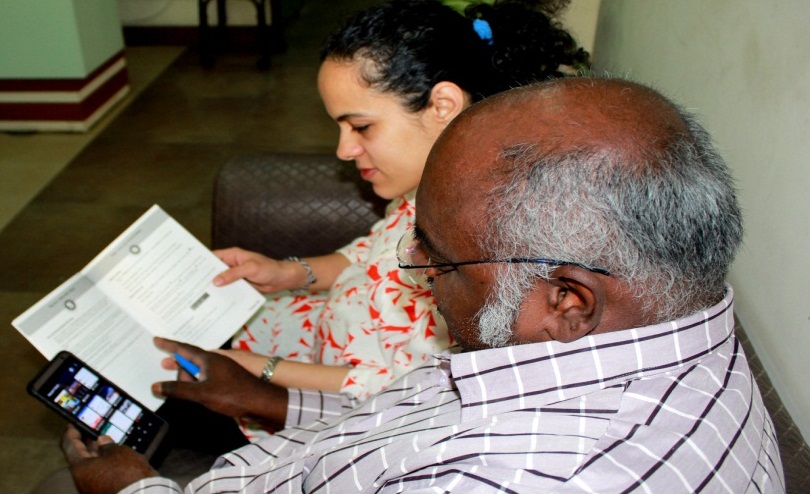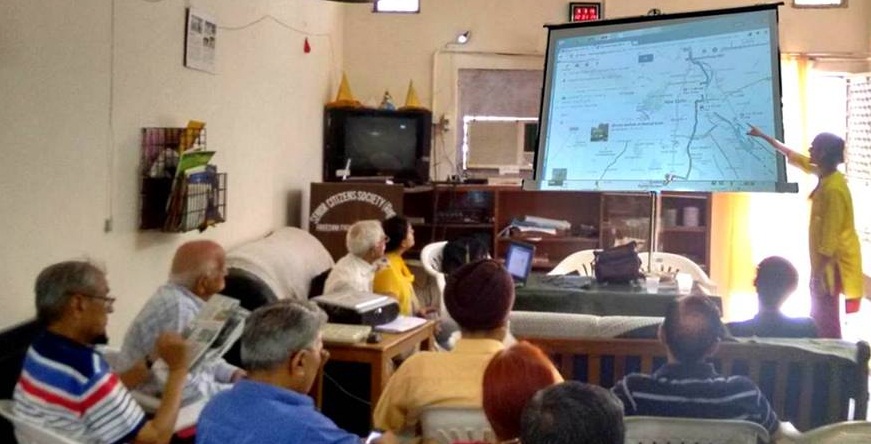When Ishanti Ghose sipped her espresso at work on a Monday morning while recounting to her colleagues her weekend spent giving her grandmother technology lessons, little had she known that just a friendly conversation with her coworkers would gradually take the shape of an incredible new project for social change!
Ishanti works at HelpAge India, and as she shared her grandmother’s innocence and excitement at learning how to use WhatsApp and Skype, she realised how this simple knowledge had the power to connect her at home to her old schoolmates across the world, or to her grandchildren, with just a mouse click!

She saw how giving older people access to technology improved the quality of their lives significantly by encouraging interaction and, therefore, combating their loneliness.
A game changer to enable digital access for older people
Within a few minutes, Ishanti and I had a candid chat and later that day the project idea was firmly conceptualised.
What struck me about Ishanti’s idea is that was based on fulfilling a need older people had, backed by empathy towards the cause and conceptualised by a young person.
We brainstormed how this could be a potential game changer for providing digital access to the thousands of older people actively associated with HelpAge through the pan-India Senior Citizen Associations network. Within a week, a basic tech learning guide was developed called “Making smartphone and computer learning fun and easy”.
Ishanti designed the booklet in a couple of days and, by the end of the week, they were printed and made available for free on the HelpAge India and Advantage websites for anyone to download. We wanted as many older people as possible to start using the basic guide and get on the way to becoming tech-savvy.
Combining social and tech inclusion
HelpAge India reached out to more than 100 volunteers across 15 cities to take a two-day training session. Within two months of the launch in November 2015, over 350 training sessions had taken place.

The volunteers then went out across the country to train older people at senior citizen associations. They covered the basics of Google Maps, WhatsApp, paying utility bills online, booking cabs and much more.
One outstanding impact we saw was that several small local computer coaching institutes reached out to HelpAge India, seeking permission to use the tech learning guide to give free classes to older men and women in their neighbourhoods.
Raman, a volunteer from an engineering college in New Delhi told us: “The tech learning guide, with its easy step-by-step structure, gives confidence to the older people to revisit their training after it has taken place.”
The volunteers’ efforts are helping to tackle loneliness and make older people feel technologically and socially up-to-date and included.
Digital inclusion is an enabler for active ageing
It is so very gratifying for volunteers when their older “students” thank them, as was the case of Neeta Chatterjee, 82 from Chittranjan Park, New Delhi.
“When I asked my daughter to teach me how to use my new smartphone, I could not understand her rapid fire instructions. But when the HelpAge volunteer came with the basic technology guide, she explained it slowly going over each step and I suddenly started enjoying the learning process,” she said.
“Facebook, Google and Skype were no longer frightening strangers, but instead became my friends. Today, I talk to my grandson in San Francisco, pay my Airtel mobile bill online, and, can you imagine, I even bought a microwave oven over the web.”
“My mornings are no longer lonely. After breakfast, I log on to my Facebook account and chat with six of my college friends, class of ‘62.”
After this experiment, HelpAge India is more committed than ever to champion digital inclusion as one of the empowering pillars of active ageing.
Share your experiences of digital inclusion for older people
We’d love to hear what you’re doing to promote the digital inclusion of older people in your country. Let us know by leaving a comment below!
